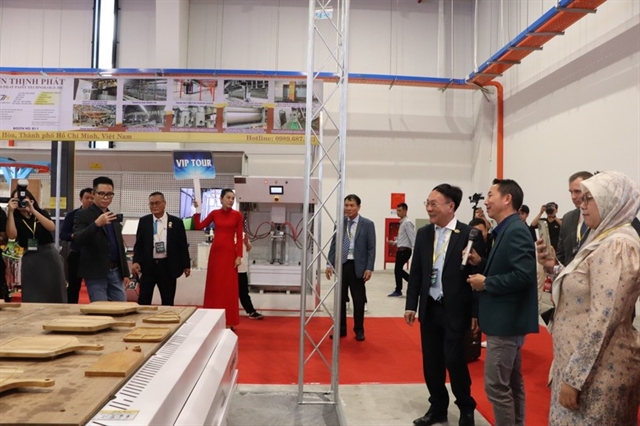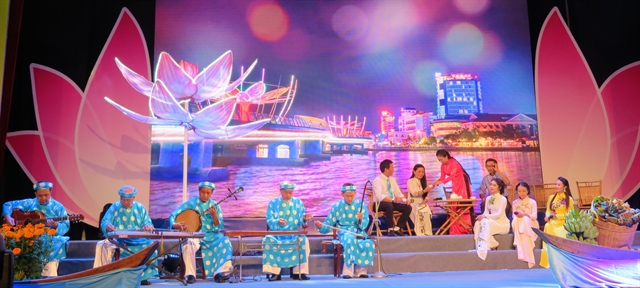 Features
Features

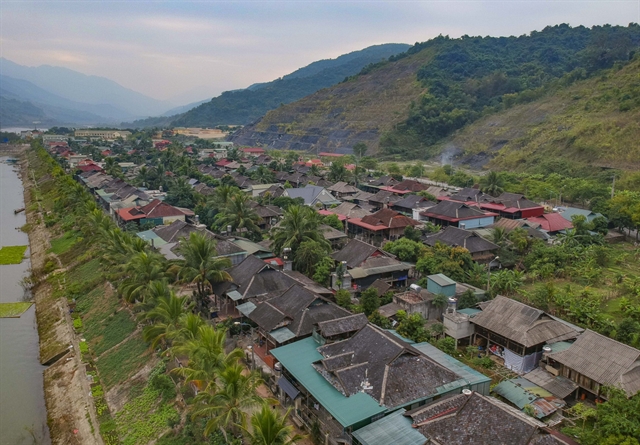 |
| Mường Lay is the locality with the highest number of traditional stilt houses built by the White Thái ethnics. VNA/VNS Photos Xuân Tư |
Nestled in the heart of Điện Biên Province, Mường Lay Ward has claimed a remarkable record: the locality with the highest density of traditional stilt houses built by the White Thái ethnic minority group in Việt Nam.
This vibrant community stands as a living testament to the rich cultural tapestry of the northwest, where each stilt house tells a story of heritage and resilience, inviting visitors to explore its architectural legacy.
Navigating the winding roads, we arrive in Mường Lay on a sunny summer morning. From a distance, this charming town at the confluence of the Đà, Nậm Na and Nậm Lay rivers resembles a watercolour painting, where mountains, forests, rivers and hidden stilt houses create a serene yet lively beauty.
Currently, Mường Lay boasts nearly 1,200 traditional stilt houses across an area of 112 square kilometres, a density of 10 houses per square kilometre, the highest in the country for the White Thái community.
Lò Minh Triều, head of the Thái Cultural Club in Mường Lay, guides us to a three-compartment stilt house that has stood for three generations. The wooden columns have aged gracefully, and the bamboo floor creaks softly with each foot step.
“The stilt houses of the White Thái people here have existed for hundreds of years. Despite many changes, the locals here still preserve the traditional architecture of their ancestors,” Triều says.
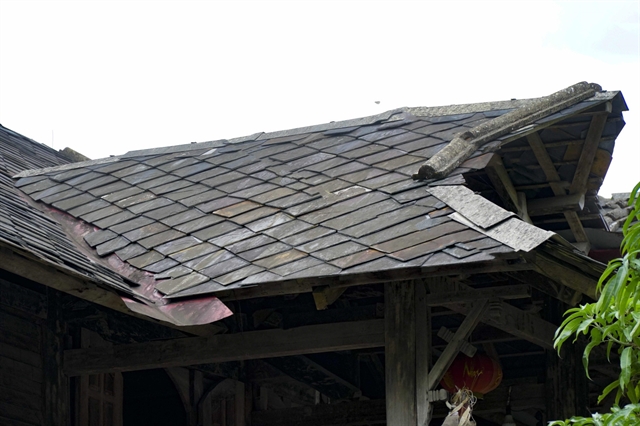 |
| The traditional stilt houses in Mường Lay are uniquely roofed with brown and black slate tiles. |
It is no coincidence that Mường Lay is known as the land of stilt houses for the White Thái people. These homes are not just living spaces; they are repositories of memory, where each wall and beam holds a part of the community's history. The slate roofs and carvings of crescent moons and suns evoke a world that is both rustic and profound.
“Each house is a living cultural symbol. It reflects craftsmanship and aesthetic values while embodying the beliefs and ways of life of the White Thái community from the past to the present,” Triều says.
The closely packed rows of stilt houses, along with coconut trees casting shadows by the Sơn La Hydroelectric Lake, form a harmonious architectural ensemble. Each house tells its own story about the weddings and festive nights of dancing around jars of local rice wine.
Unique architecture
The traditional stilt houses in Mường Lay are roofed with brown and black slate tiles, characteristic materials sourced from the Đà River area, creating a distinctive architectural style.
Local Sìn Văn Tăn says that the slates used to cover the roofs come in various colours. Among these, the black one is the hardest.
When first dug from the ground, the slate is soft, making it easy to split into thin flat layers and cut into various shapes. The slate tiles are waterproof, resistant to cold and heat, and do not corrode due to environmental factors. Even after decades of use, their colours remain vibrant.
Economically, Tăn says, slate tiles are cheaper than other roofing materials and have a lifespan many times longer, making them the preferred choice for the local residents.
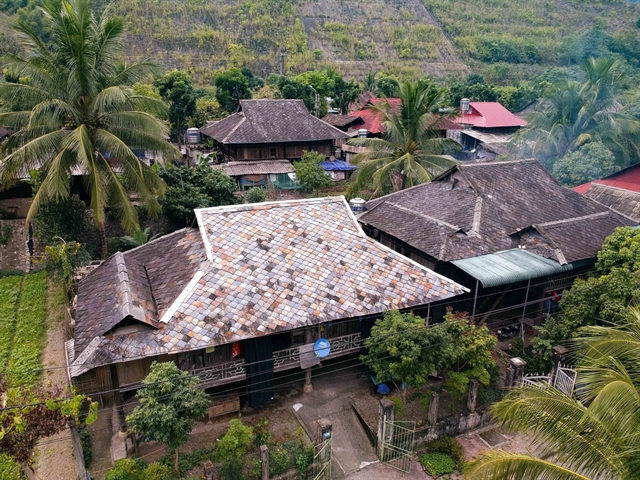 |
| A stilt house roofed with multi-coloured slate tiles creates impressive beauty in Mường Lay. |
As Tăn shows us through his family’s traditional stilt house, he says that owning such a home is a source of pride for every family. The roof of his house is covered with over 4,000 black, brown, and multi-coloured slate tiles, that has been in use for decades, passed down from his ancestors.
To support the heavy stone roof, the stilt house is constructed with dozens of large wooden pillars, beams, along with a system of rafters and braces, creating a solid and robust framework.
According to Tăn, in the past, local residents had to quarry slate from open pits along the Đà and Nậm Na rivers, relying entirely on manual labour. This work was arduous and heavily dependent on weather conditions, such as sunshine and rain, as well as the water levels of the Đà River.
While finding slate deposits is not difficult, splitting them into flat thin layers is labour-intensive and time-consuming. To make thousands of slate tiles to roof a traditional stilt house can take many months or even years.
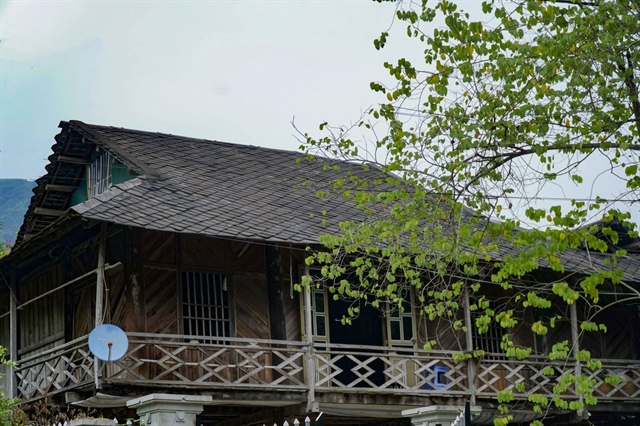 |
| The traditional stilt houses possess a unique beauty that characterises Mường Lay. VNA/VNS Photo Xuân Tư |
A ceremony to designate Mường Lay Ward as the locality with the highest number of traditional stilt houses of the White Thái ethnic group in Việt Nam took place in May.
“This is a deserving recognition for the efforts to preserve the valuable heritage of the White Thái community here. This achievement not only honours local culture but also opens up significant potential for Mường Lay to develop community tourism and eco-tourism tied to its identity," Phạm Đức Toàn, deputy chairman of the People's Committee [Administration] of Điện Biên Province, said at the ceremony.
"We hope this place will become a unique destination in the northwest region.”
The record is just the beginning. Mường Lay is proposing to recognise the technique of building White Thái stilt houses as a national intangible cultural heritage, a necessary step to legally protect the area.
Additionally, the locality is developing experiential tourism and One Commune, One Product initiatives linked to stilt houses, organising festivals in traditional settings.
The stilt houses serve as residences and also as cultural centres, with some families welcoming guests under a stilt house homestay model, helping to preserve the heritage while boosting local livelihoods.
In the future, Mường Lay will not only be a destination for visiting stilt houses, but also a place where people come to slow down and gain a deeper understanding of a community that has preserved its cultural identity amid modernisation. VNS

